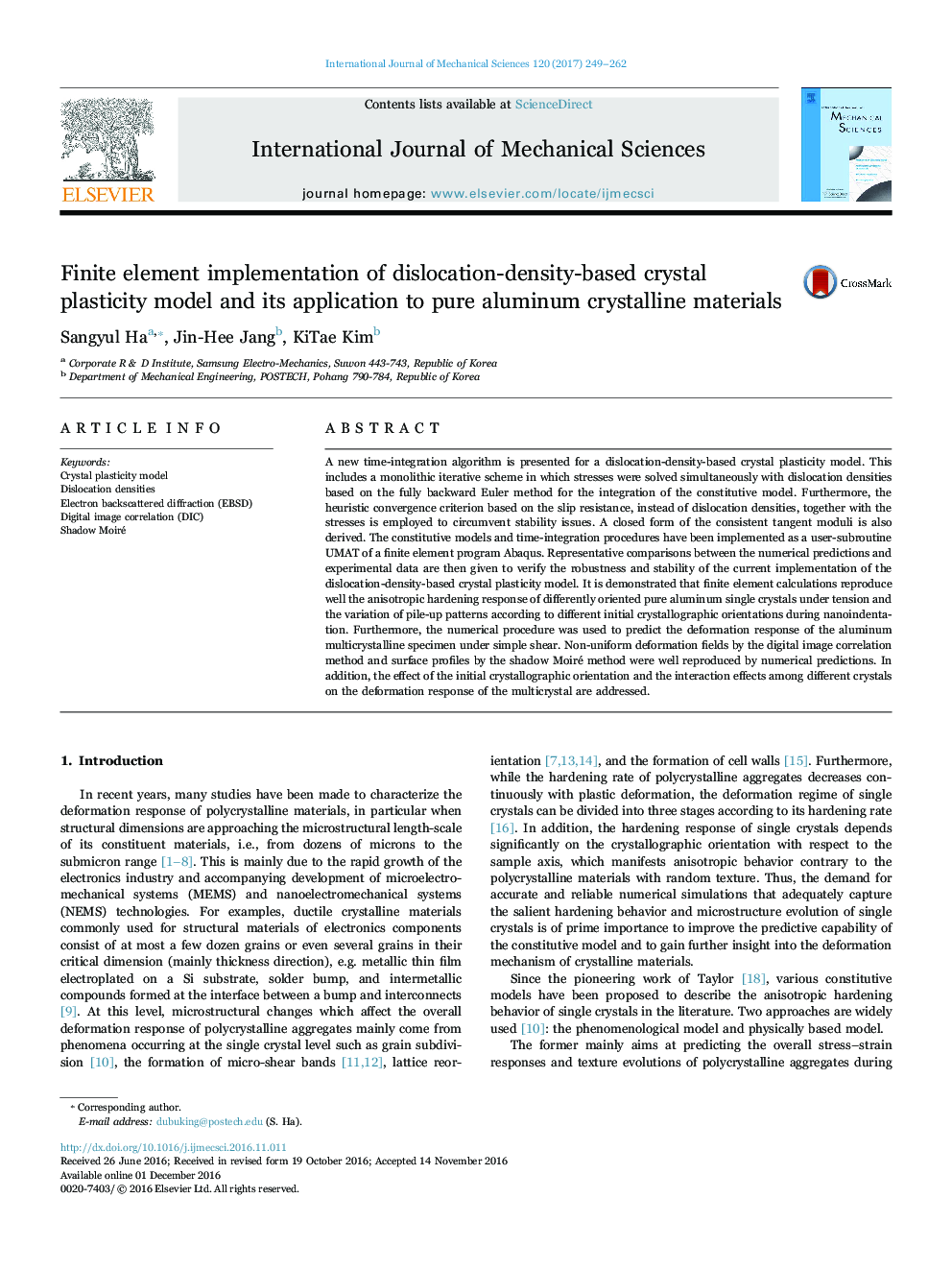| کد مقاله | کد نشریه | سال انتشار | مقاله انگلیسی | نسخه تمام متن |
|---|---|---|---|---|
| 5016280 | 1464966 | 2017 | 14 صفحه PDF | دانلود رایگان |
- A new time-integration method is presented for a dislocation-density-based CP model.
- An implicit method with the consistent tangent moduli is implemented.
- The computational procedure is validated with experiments of aluminum materials.
- Indentation of single crystals and simple shear of the multicrystal are performed.
A new time-integration algorithm is presented for a dislocation-density-based crystal plasticity model. This includes a monolithic iterative scheme in which stresses were solved simultaneously with dislocation densities based on the fully backward Euler method for the integration of the constitutive model. Furthermore, the heuristic convergence criterion based on the slip resistance, instead of dislocation densities, together with the stresses is employed to circumvent stability issues. A closed form of the consistent tangent moduli is also derived. The constitutive models and time-integration procedures have been implemented as a user-subroutine UMAT of a finite element program Abaqus. Representative comparisons between the numerical predictions and experimental data are then given to verify the robustness and stability of the current implementation of the dislocation-density-based crystal plasticity model. It is demonstrated that finite element calculations reproduce well the anisotropic hardening response of differently oriented pure aluminum single crystals under tension and the variation of pile-up patterns according to different initial crystallographic orientations during nanoindentation. Furthermore, the numerical procedure was used to predict the deformation response of the aluminum multicrystalline specimen under simple shear. Non-uniform deformation fields by the digital image correlation method and surface profiles by the shadow Moiré method were well reproduced by numerical predictions. In addition, the effect of the initial crystallographic orientation and the interaction effects among different crystals on the deformation response of the multicrystal are addressed.
Journal: International Journal of Mechanical Sciences - Volume 120, January 2017, Pages 249-262
